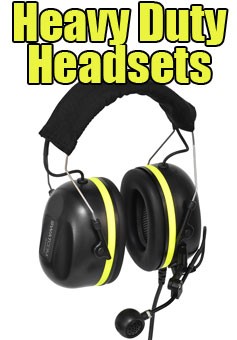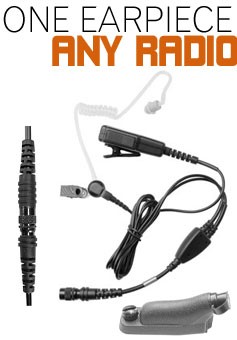
In the symphony of life, each of us dances to a different beat, but for some, the orchestra's crescendo can become an overwhelming cacophony. This is often the case for individuals living with Autism Spectrum Disorder (ASD), who frequently experience sensory processing difficulties that amplify the sounds of everyday life, turning routine experiences into a jumble of noise. Enter ear defenders, the unsung heroes in the toolkit to help those with autism find harmony in a world that often seems too loud.
Understanding Sensory Processing in Autism
For those familiar with ASD, it's apparent that sensory processing differences can dramatically shape an individual's experience. Sensory issues, in particular auditory sensitivity, are commonly recognized features of autism. Even the most familiar sounds can provoke distress or discomfort, leading to avoidance behaviors and considerable challenges in daily functioning. It's akin to hearing every whisper as a shout and every rustle as a roar, a state that is perpetually taxing and can be profoundly isolating.
The Science Behind Ear Defenders
Thickening the volume of life can be as simple as slipping on a pair of ear defenders. These nifty devices work by reducing the intensity of sound waves reaching the ears, essentially providing a little peace in a noisy world. The technology is straightforward; noise-canceling properties of ear defenders dampen the external sounds, making the environment more tolerable by allowing the user to control the volume for the first time.
The Impact of Ear Defenders on Sensory Integration
The use of ear defenders is not merely a matter of muffling noise; it is about promoting a state of sensory integration which is always desired but often elusive for those with autism. The reduction in auditory stimuli allows for a more predictable and manageable experience, which fosters a greater sense of comfort and control. This can be particularly beneficial in environments that are challenging, such as busy classrooms or bustling public spaces.
How Ear Defenders Facilitate Social Engagement
One of the most profound impacts of ear defenders is their role in fostering social connections. By alleviating the sensory overload, they enable individuals with autism to partake in social situations with greater ease. Whether it's a family gathering, a trip to the store, or classroom activities, ear defenders help to level the playing field, enabling more natural interactions that may have previously been overshadowed by the sensory storm.
Incorporating Ear Defenders into Daily Life
The introduction of ear defenders can be a game-changer, but like any tool, their effectiveness lies in their integration into daily life. Education and understanding around their use are key. It’s important for parents, teachers, and caretakers to communicate the purpose of ear defenders, establish clear signs or messages for when they are needed, and ensure they are accessible and familiar to the individual with autism.
The Home Environment
Implementing ear defenders in home life can ease transitions, prevent meltdowns, and provide a retreat when the noise becomes too much. They should be readily available in calming areas and during activities like meals, homework, or watching TV, where sensory overload is common.
School Adaptation
In a school setting, educators play a pivotal role in supporting students with autism. Ear defenders can be a powerful ally in aiding concentration, reducing stress, and supporting the learning process. With proper strategies, they can be integrated into the school day, such as during independent work, tests, or noisy class activities.
Choosing the Right Ear Defenders
Not all ear defenders are created equal, and selecting the right pair is crucial to their effectiveness and comfort. Features, such as the level of noise reduction, type of material, and design that enhances rather than stifles communication, should be considered when making a choice. Comfort is also essential, as the defenders must be worn for extended periods.
Finding the Perfect Fit
Ensuring a secure and comfortable fit is imperative, especially for individuals with autism, who may be more sensitive to tactile sensations. Adjustable bands, cushioned earpieces, and the ability to try different sizes will contribute to a positive experience with ear defenders.
Balancing Effectiveness and Aesthetics
While the primary function of ear defenders is to manage sensory input, the aesthetics also play a role, particularly for children and teenagers. Finding a balance between the device's effectiveness and the individual's willingness to use them is important. Many companies offer a range of colors and styles to cater to personal preferences.
Reaping the Benefits of Ear Defenders
The advantages of ear defenders extend beyond their immediate impact on sensory processing. They can be powerful tools for fostering independence, self-regulation, and improved quality of life for individuals with autism. An environment with controlled sensory input allows for better focus and engagement, leading to enhanced learning and social experiences.
An Aid to Learning
In educational settings, ear defenders support the learning process by reducing distractions. This can result in improved task completion, better retention of information, and an overall more positive experience in the classroom.
Promoting Self-Regulation
The use of ear defenders empowers individuals with autism to take control of their environment and emotional state. They can choose to use them when the world becomes too overwhelming, signaling a conscious effort to self-regulate and engage with their surroundings on their terms.
Overcoming Preconceptions and Challenges
Despite the clear benefits of ear defenders, their usage can sometimes be met with resistance or lack of understanding. Educating peers, family members, and the community about the role of ear defenders in supporting individuals with autism is important in breaking down these barriers.
Open Communication and Advocacy
Open and clear communication about the purpose of ear defenders helps to create a supportive network. Advocacy work, including sharing success stories and addressing misconceptions, is necessary to promote acceptance and inclusivity for those who need these devices.
Integrating Ear Defenders into Social Norms
In an ideal world, the use of ear defenders would be as accepted and unremarkable as wearing glasses or a hearing aid. Normalizing their use through education and public awareness campaigns can help shift the perception from a 'special need' to a 'standard accommodation.'
Conclusion
Ear defenders are a small, often colorful, piece of equipment that can make a monumental difference in the lives of those with autism. They represent much more than passive sound blockers; they are instruments that can harmonize the sensory discord experienced by individuals on the spectrum. By understanding their potential and implementing them effectively, we can help create a world that is not just quieter, but more accessible and accommodating for everyone. It's time to equip our community with the tools they need to truly listen to the needs of those with autism.
-

Adult Ear Defenders
Small: Offers a protection level up to 24db, suitable for moderate noise e...

















